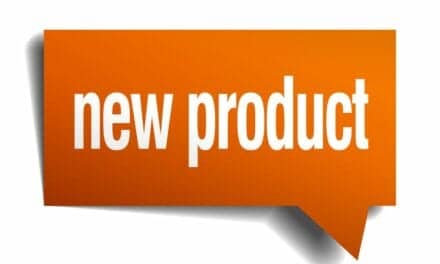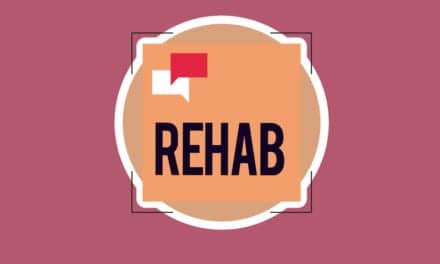
Immersive virtual reality environments such as the Computer Assisted Rehab Environment (CAREN), shown here, enable the athlete to train in scenarios that replicate competition conditions. This device includes features such as a curved virtual reality screen that surrounds the athlete and a large training platform that can be tilted in any direction to simulate lifelike conditions.
By Robert Aranbayev, DPT, and Lev Kalika, DC
As technologies become more advanced, they are increasingly being used in athletics for assessment, performance enhancement, and rehabilitation. Within the rehab environment, technology provides unprecedented insight into the nature of athletic injuries and the mechanisms behind them. With the help of technological tools, sports physical therapists are better able to provide individualized treatment and training programs that help injured athletes return to play with enhanced performance and reduced risk of injury.
Performance itself still comes down to the skills, mind-set, and training status of individual athletes, and athletes and coaches are constantly on the lookout for new ways to gain even the slightest competitive edge. Technologically enhanced assessment and treatment protocols equip sports physical therapists with quantifiable data that can be used to develop corrective therapies and sport-specific training plans.

The AlterG Anti-Gravity Treadmill uses patented differential air pressure to lower the gravitational load on the user’s body by precise 1% increments.
Technology and Return to Play
After an injury, the athlete must overcome both physical and psychological obstacles in the face of pressure to return to play as quickly as possible. In the past, readiness for return-to-play was based on timelines relative to the type and location of injury. But injuries can vary in severity, and individual athletes heal at varying rates.
Premature return to play correlates with increased risk of re-injury that can be career-ending. Lack of confidence in an injured body part and fear of re-injury can undermine performance by causing the athlete to second-guess or hold back during competition. Technology enables therapists to evaluate the athlete throughout the healing process and to introduce more advanced training protocols in stages, only when the athlete is physically and mentally ready.
[sidebar float=”right” width=”250″]Product Resources
The following companies offer products that can be used for sports and fitness programs of all types:
AlterG
www.alterg.com
AMTI
www.amti.biz
APDM
www.apdm.com
BTE
www.btetech.com
CIR Systems Inc / GAITRite
www.gaitrite.com
Clarke Health Care Products
www.clarkehealthcare.com
Dynatronics
www.dynatronics.com
Everyway4all
www.everyway4all.com
Fitter International
www.fitter1.com
Magister Corp
www.magistercorp.com
Mobility Research
www.litegait.com
Motekforce Link
www.motekforcelink.com
OPTP
www.optp.com
Performance Health
www.performancehealth.com
ProtoKinetics
www.protokinetics.com
Sissel USA
www.sisselshop.com
Spirit Fitness
www.spiritfitness.com
Stretchwell
www.stretchwell.com
The Hygenic Corp
www.theraband.com
VersaSlider
www.versaslider.com[/sidebar]
Exciting New Technologies for Sports Rehab
Perhaps the greatest benefit of technology for rehab is immediate access to real-time data. Gone are the days of waiting for diagnostic imaging results, acquiring delayed performance feedback, and best-guessing projected return-to-play dates. Technology enables the athlete to remain actively involved throughout the rehab process, with accurate assessments of healing progress and treatment outcomes.
Therapists at New York Dynamic Neuromuscular Rehabilitation & Physical Therapy, New York, NY, use what they feel are some of the top technologies in sports rehab. Among them are:
• VR Immersive Environments: Immersive virtual reality environments enable the athlete to train in lifelike scenarios that replicate competition conditions. Immersive systems vary in quality, price, and capability. The most technologically advanced to date is the computer assisted rehab environment (CAREN), from Amsterdam, Netherlands-based Motekforce Link. This device features a curved virtual reality screen that surrounds the athlete, a large training platform that can be tilted in any direction to simulate conditions of play, a dual-belt treadmill that can be moved independently, dual force plates, and a harness to help prevent injury.
• Anti-Gravity Treadmill: When injuries prohibit full body weight loading during rehabilitative training, the Anti-Gravity Treadmill from AlterG, Fremont, Calif, has the effect of reducing the force of gravity, meaning injured structures are able to work through their normal range of motion with reduced load. The Anti-Gravity Treadmill uses patented differential air pressure to lower the gravitational load on the user’s body by precise 1% increments. This reduces the pain that the injured athlete would otherwise feel from the force of impact, and thereby facilitates a wide range of motion and helps the user to increase levels of function and fitness.
• Ultrasound-Guided procedures: Ultrasonography has reached its heyday in terms of image quality, portability, and affordability. The technology allows for real-time diagnostic imaging with the patient in motion, rendering a more complete profile of damaged tissues than x-ray or MRI. Ultrasound is also useful for precise dry needling of myofascial trigger points, and for targeted injection therapies such as platelet-rich plasma (PRP), Prolotherapy, hydrodissection procedures, and corticosteroid injections.
• Surface Electromyography (SEMG): Deficient motor unit firing patterns, faulty timing, and muscle imbalances due to compensation are common after an athletic injury. Wireless surface electromyography provides data about muscle activity while the athlete is in motion, helping clinicians detect motor deficiencies that are invisible to the naked eye. One provider of this type of technology, Thought Technology Ltd, offers the MyoTrac Infiniti T9800 as a 2-channel system electromyography and electric muscle stimulation device that offers standard SEMG as well as neuromuscular electrical stimulation (NMES) and EMG-STIM protocols for quick assessment and training. The mTrigger Biofeedback System from mTrigger LLC, Newark, Del, is another system available to the PT market that provides SEMG functions.
• Force Plate Technology: Force plate technology enables us to measure forces generated by the athlete, along with ground reaction forces (GRFs) in the vertical, medial-lateral, and anterior-posterior planes. This data can then be used to fine-tune biomechanics, set training goals, and provide the athlete with quantitative performance feedback. Several sources provide force plates designed for use in the PT clinic, including Portland, Ore-based APDM, which manufactures the portable Mobility Lab system. Among the features and functions of the Mobility Lab is the ability to conduct gait analysis measure of the lower limb that include cadence, elevation at midswing, gait cycle duration, and gait speed. The device is also designed to have applications for upper limb measurements and anticipatory postural adjustment. Another manufacturer, Watertown, Mass-based AMTI, offers a selection of force plates specially designed for gait, balance, and sports applications. One of the company’s latest product developments is the BP600900-GT force plate, which features an extreme viewing aperture of a 600mm x 900mm platform area on a 38-millimeter-thick glass top. This top is designed to allow activities on the top surface of the force plate to be viewed and recorded from the underside.

Technology enables therapists to evaluate the athlete throughout the healing process, and introduce more advanced training protocols in stages as the athlete becomes physically and mentally ready.
The Future Role of Technology in Rehab
In the near future, the use of technology will become commonplace for physical therapists, athletic trainers, and chiropractors. Many ultrasound-guided procedures have already become common practice in Europe. Over the next few years, healthcare professionals can expect to see a fusion of many existing technologies in the rehab arena, as well as in diagnostics, such as a fusion of ultrasound and MRI.
The use of technology in sports rehab holds promise for enhanced athletic performance and reduced risk of injury. It allows therapists to refine training protocols, project recovery time more accurately, provide real-time feedback, and optimize biomechanics. Technology gives therapists invaluable tools for helping injured athletes get back in the game with confidence, and used as post-injury treatment interventions, can define the difference between successful return to play and the end of an athlete’s career. PTP
Robert Aranbayev, DPT, received an undergraduate degree from Hunger College, New York, and earned a Doctor of Physical Therapy from Touro College. His specialties include the evaluation and treatment of orthopedic disorders and postsurgical rehabilitation. He has a particular interest in the application of manual therapy in sports medicine, and works with a large population of individuals affected by orthopedic and neurological conditions.
Lev Kalika, DC, is the owner of New York Dynamic Neuromuscular Rehabilitation & Physical Therapy, New York City. He earned a Doctor of Chiropractic from National College of Chiropractic, Chicago, and a Bachelor of Science from Brooklyn College, New York City. His areas of specialization include diagnostic musculoskeletal ultrasonography, application of diagnostic ultrasonography in rehabilitation medicine, dry needling under ultrasound, and gait analysis for runners and people with orthopedic disorders of lower extremities. For more information, contact [email protected].




